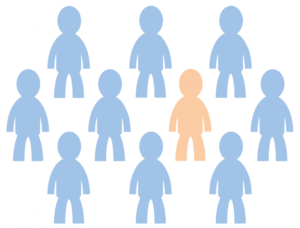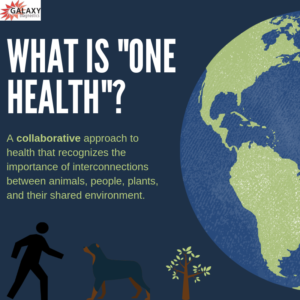A topic that ignites controversy in the zoonotic disease community is the “rare disease” designation. This designation rings false for diseases that seem underdiagnosed, or where there are peer-reviewed publications indicating underdiagnosis. It can seem like yet more evidence that a condition is ignored. However, the rare disease designation also aims to turn that around by making educational and research support available.
Defining A Rare Disease
In the United States, a rare disease is defined as a disease that affects fewer than 200,000 people in the country, or about 1 in 1,500 people. The definition of rare disease varies around the world. In general definitions range from affecting fewer than 1 in 1,000 people to affecting fewer than 1 in 2,000 people.

Most people that have been diagnosed with rare diseases are aware of the saying popular among physicians, “when you hear hoofbeats, think horses and not zebras.” Some sources claim that a rare disease takes almost 5 years to be diagnosed and patients see an average of more than 7 physicians during that time. While it is difficult to come up with hard numbers across all rare diseases, it is safe to say that people arrive at a diagnosis feeling frustrated after years of failures that included a lot of mistaken “horses.” Consequently, this saying becomes something few people with a rare disease ever want to hear again.
Education
About 80% of rare diseases are caused by genetic factors. The Genetic and Rare Disease Information Center (GARD) at the NIH lists 58 rare diseases caused by bacteria, 38 caused by viruses and 12 caused by fungi. Only a portion of those disease are zoonotic diseases, that is, diseases shared with animals.
Lack of awareness is something NIH considers when adding a listing to GARD. Diseases that are genetic or “when information is lacking from other sources” may be included. Using this exception, the GARD Information center lists one disease caused by a bacteria, virus or fungus that is not designated as rare, and that is Lyme disease.
Each listing in the GARD Information Center provides links to organizations that are advocates or collecting information about the condition. One of those organizations is the National Organization for Rare Disorders (NORD). NORD is currently gearing up for Rare Disease Day on the last day of February. You can find out more on their website.
There are as many as 7,000 known rare diseases. Add up all the rare diseases and about 1 in 10 people in the United States has a rare disease.
Because of this, knowing someone on your block with another rare disease is likely. Coming together to increase awareness about rare diseases helps everyone with a rare disease. It helps physicians know that while there are a lot of horses out there, there is also an entire herd of zebras to identify.
New Drug Development
In the United States the Orphan Drug Act of 1983 provides additional inducements for the development of drugs to treat rare conditions. The act has had an impact, increasing the number of treatments for rare conditions that make it to market by more than 10 times.
Partly because of the marked success of the law in the United States, other countries and regions have adopted similar laws, including the European Union in 2000.
One Health and Rare Zoonotic Diseases
Zoonotic diseases can be shared between people and animals. Sometimes they are shared via a vector such as a flea, tick or mosquito that transfers a pathogen between different hosts. Other times they can be transmitted directly from animal to human via saliva or other bodily fluid. Vector-borne zoonotic diseases listed by GARD include cat scratch disease (bartonellosis) and Lyme disease (borreliosis).
A concept called One Health, a recognition that the health of people, animals and the environment are interconnected, is especially suited to finding better prevention and treatment for zoonotic diseases. January 2020 has been designated by the United States congress as One Health Awareness Month. Find out more about how to participate in One Health Awareness Month from the One Health Commission’s PDF Guide.
Another major component of One Health is recognizing the web of human and animal relationships that build benefits and risks. More than half of households in the United States include a pet. The animal agriculture business in the United States alone is worth more than $175 billion per year.
All of this can be disrupted through use of zoonotic diseases as biological warfare agents. Consequently, in addition to research funding from NIH and other human health focused bodies, the US Department of Defense (DoD) invests in zoonotic monitoring and research. Every year the DoD holds One Health Day to raise awareness in all branches of the military of the risks zoonotic disease pose to military staff, both human and animal.
Universities around the country are developing One Health educational programs. These programs bring together departments from animal health, human health, agriculture and forestry. Pilot programs such as one developed at UC Davis provide healthcare for human and animal members of a household together.
Conclusion
The designation of a condition as “rare” is controversial because it makes patients feel as if their health concerns are being minimized by regulatory bodies. However, this designation prompts the creation of programs, such as the Orphan Drug Act, that help increase funding and innovation for developing better diagnostics and treatments. Additionally, the inclusion of One Health education in government helps raise awareness of important zoonotic diseases that are considered “rare”.
References
Weinstein, R. A. et al. (2001). Risks and prevention of nosocomial transmission of rare zoonotic diseases. Clinical Infectious Diseases, 32(3), 446-456. doi:10.1086/318509 https://academic.oup.com/cid/article/32/3/446/283540
Genetic and Rare Diseases Information Center. (2017). FAQs about rare diseases. Washington, DC: US Department of Health & Human Services. Retrieved from https://rarediseases.info.nih.gov/diseases/pages/31/faqs-about-rare-diseases
Shire. (2016). The global challenge of rare disease diagnosis. Retrieved from https://www.shire.com/-/media/shire/shireglobal/shirecom/pdffiles/patient/shire-diagnosis-initiative-pag-leaflet.pdf
Committee on Accelerating Rare Diseases Research and Orphan Product Development. (2010). Profile of rare diseases. In M. J. Field & T. F. Boat (Eds.), Rare diseases and orphan products: Accelerating research and development (Ch. 2). Washington, DC: The National Academies Press. Retrieved from https://www.ncbi.nlm.nih.gov/books/NBK56184/ chapter 2 “Profile of Rare Diseases”
Branca, M. A. (2019). Their lives in their hands. Nature Biotechnology, 37, 1255-1260. doi:10.1038/s41587-019-0354-1. Retrieved from https://www.nature.com/articles/s41587-019-0303-z.epdf
Genetic and Rare Diseases Information Center. (2017). Cat scratch disease. Washington, DC: US Department of Health & Human Services. Retrieved from https://rarediseases.info.nih.gov/diseases/27/cat-scratch-disease https://rarediseases.info.nih.gov/diseases/browse-by-first-letter/B
Genetic and Rare Diseases Information Center. (2015). Lyme disease. Washington, DC: US Department of Health & Human Services. Retrieved from https://rarediseases.info.nih.gov/diseases/12073/lyme-disease
https://rarediseases.info.nih.gov/diseases/diseases-by-category/2/bacterial-infections



